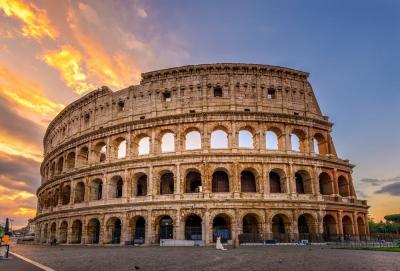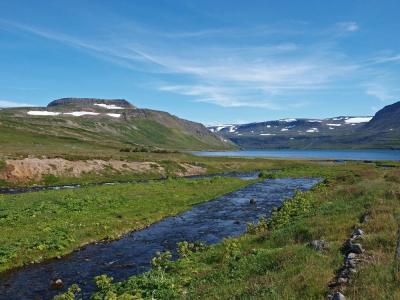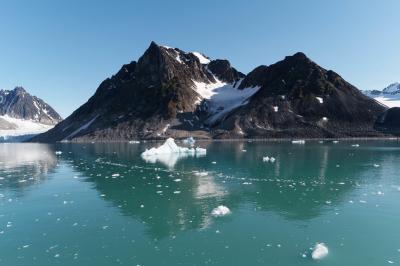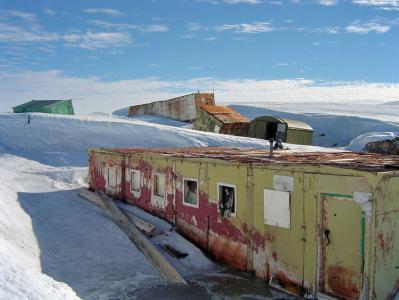Welcome to Norway
Outdoor activities and sports, from dog-sleddingng in winter to mountaineering, angling and whitewater rafting in the summer, are national favourites among the outdoor loving population of Norway. However, hiking and cross-country skiing are the most-loved outdoor activities.
Norway has some of the world’s most beautiful mountain and boasts rocky spires, deep green fjords and high peaks that are emphasized by the surrounding icy glaciers. Much of this breathtaking terrain is now designated within 41 national parks of which 7 are in Svalbard with the remaining 34 located on the mainland. Hikers searching for anything from easy rambles to complete expeditions on well-marked trails are drawn to these parks where an outstanding network of mountain cabins with good accommodation is also available. The hiking season is mostly set by the opening and closing of the mountain lodges, but typically runs from early July to late September when the weather is at its mildest and, at 20°C and 25°C, daytime temperatures are perfect for hiking. Daylight is also much longer here – and all day beyond the Arctic Circle.
The hiking trails are generally well-marked with cairns (piles of stones). Most junctions are marked with signs and can be hard to spot. A painted, red “T” is usually seen on rocks in these areas, which is useful when the visibility of the officialposted signs is poor. However, before you set out, be sure to get a hiking map for your trail.
If you’re looking for something different, try the guided glacier hikes; the greatest selection is in the western fjords on the Jostedalsbreen glacier. However, many people – often tourists – die on these glaciers annually because they are not aware of the danger that the glaciers pose. Thus, you should only hike with a guide, never walk beneath a glacier and also follow local instructions or directions.
The oldest-known depiction of someone skiing is a 4,000 year old rock carving located in the north of Norway. For this reason, the country is widely regarded as the home of skiing. In 1767, Norway hosted the first recorded ski competition and North Americans were introduced to skis by Norwegians. The 55km Birkebeinerrennet, one of the world’s oldest cross-country ski races, attracts thousands of participants each March for the sprint between Rena and Lillehammer. The race still takes the same route. Norwegian mountaineers took in 1206 when they rescued two-year-old Prince Håkon. The birch-bark leggings (Birkebeiners) that were worn by the rescuers gave their name to this race.
In general, it is cheaper to arrange independent skiing rather than taking a tour package through an operator. Finding this information is also quite easy. Oslo offers downhill and cross-country runs. The city and ski gear is easy to rent. Lessons on dry slopes are beneficial for new skiers because they offer a chance to gain both confidence and balance. If you are new to skiing, know that cross-country skiing requires full body strength and stamina.
Conditions for snowboarding and slope skiing are usually fantastic from mid-November to late April, but daylight hours are more limited in the winter solstice. Overall, however, Norway is better than other well-known skiing areas in southern Europe: Snowfall is generally more consistent and temperatures are colder. Furthermore, Norwegian resorts tend to be less crowded which means small classes and shorter queues; they are also usually at lower altitudes. For downhill skiing, head to Voss, Lillehammer and Geilo.
Cross-country skiing features prominently in Norwegian winters as, for many Norwegians, it’s a means of transport to and from school and work; around half the nation participates in it. Regardless of where you go in Norway, a cross-country ski route is sure to be close. Parallel ski tracks are cut for skiers by machine at the larger resorts; these tracks offer good gliding conditions and guarantee that the skis remain parallel - some tracks are even floodlit. Skis for cross-country skiing can be waxed or waxless. Waxless skis have “fishscales” (rough middle tread) to grip the earth in zero temperatures while waxed skis are better for new snow and lower temperatures. When using waxed skis, a grip wax is rubbed into the centre of skis’ length; when weather is icy, we use klister instead. Wax applications to the outer thirds of the skis are beneficial to all skis.
Telemarking is a skiing technique that was developed in Telemark, southern Norway, to enable skiers to descend sleep slopes on free-heel touring skis. It provides stability and an effective manner of turning in powder snow. Basically, the skier crosses the slope in an upright position and drops to the corresponding knee when executing a turn.
With Norway’s mountains and glaciers, alpine and cross-country summer skiing is both an option and extremely popular. Despite being offered at many places, FolgefonnSommarSkisenter near Bergen is the best; it has rental gear, a café and ski lifts.
With so many lakes and rivers, Norway also has some of the best freshwater fishing in Europe. Trout, char, pike and perch are common fish as it is the salmon that once attracted so many English aristocrats. In the south, fishing is best from June to September and from July to August in the north. Seawater fishing is more frequent among professionals but amateur sea angling has become a favourite hobby off the Lofoten Islands.
All fishing is tightly controlled to prevent overfishing. You do not need a national license for sea-fishing, but national and local restrictions are placed on things like the size of the fish caught. Freshwater fishing needs a local and national license for salmon, sea trout and char. You can purchase a national license online or at post offices for 235kr while local ones are sold at some tourist offices, hotels, campsites or sports shops. If you bring your own fishing tackle, it must be disinfected before use. Many tour companies arrange Norwegian fishing trips and holidays, but they’re easy to arrange locally. Tourist offices can provide further information.
Of the dozens of fantastic spots for whitewater rafting, Voss and Sjoa are the best.







